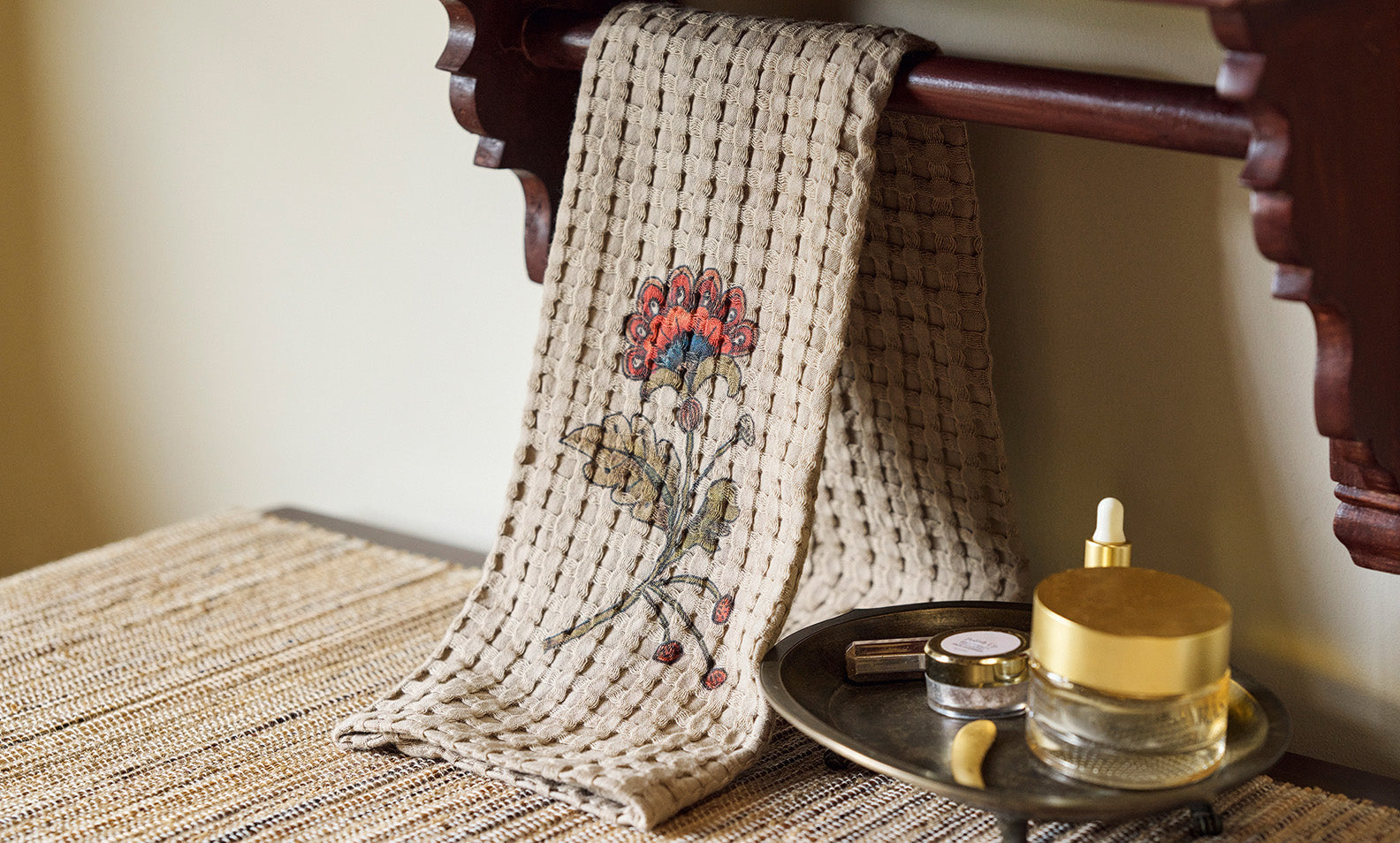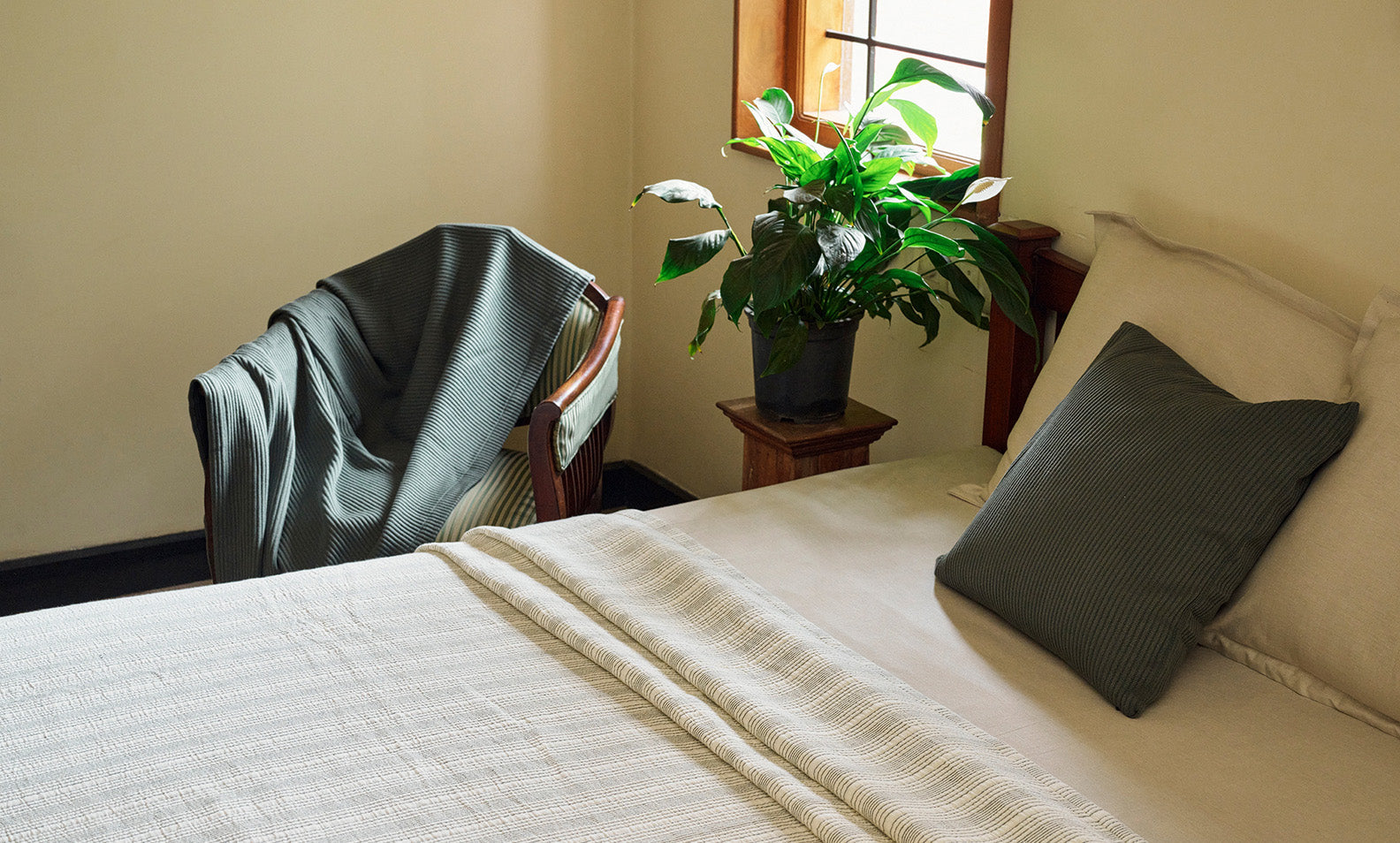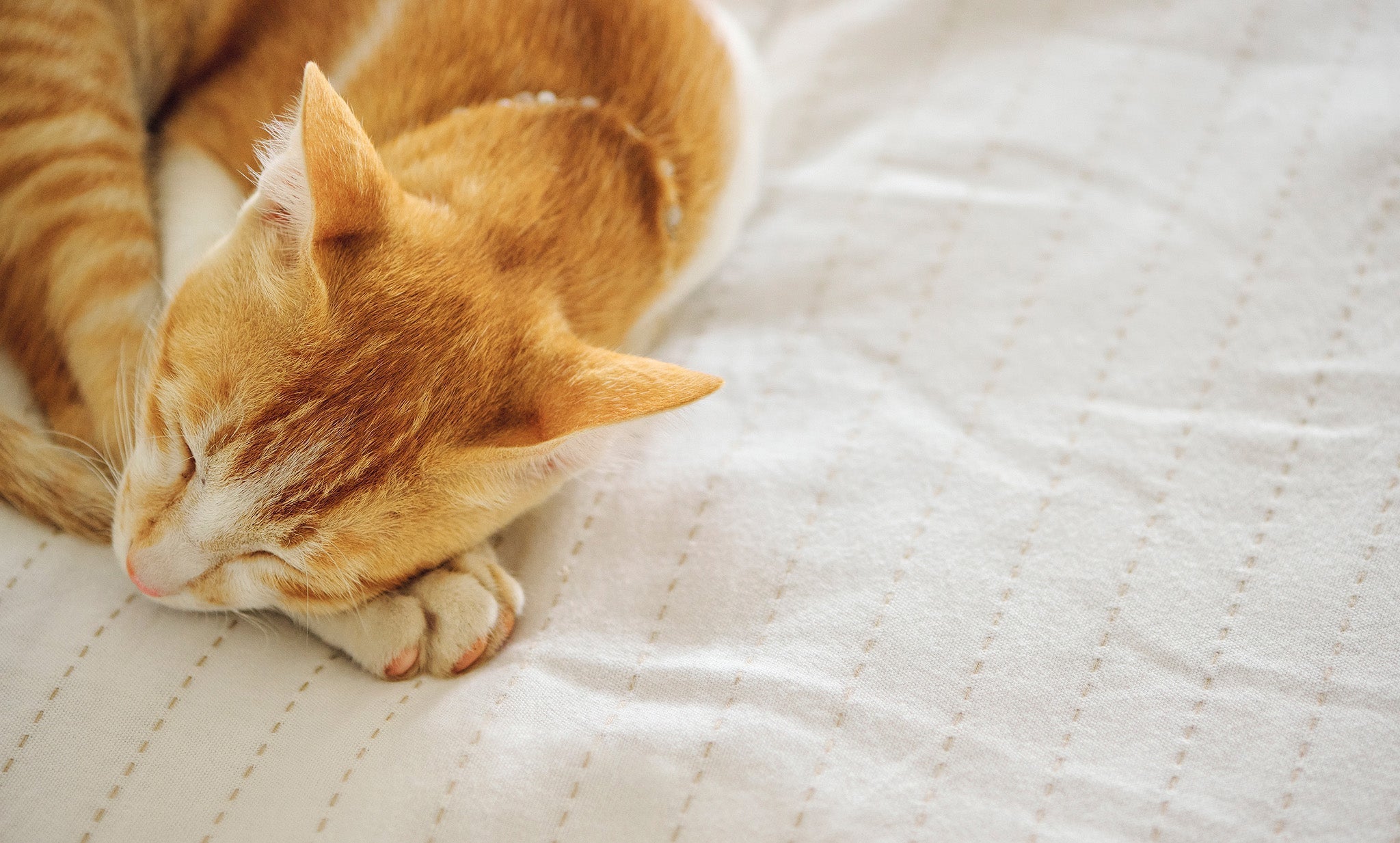
Kalamkari: Stories in Cloth
A Heritage Written in Ink and Dye

The word Kalamkari originates from two Persian roots: kalam, meaning "pen," and kari, meaning "work." Together, it means “pen work”, a fitting name for an art form that uses cloth as its page. In its earliest form, Kalamkari was a form of storytelling through fabric. Artists painted scrolls with bamboo pens, narrating epics from the Ramayana and Mahabharata as they moved from village to village. The cloth was both art and archive, carrying myths, parables, and community memory.
Over time, Kalamkari evolved beyond its narrative roots. Under temple patronage, it became a sacred decoration. Under the Mughals and later European traders, it spread into global commerce, valued for its bold florals and rich natural dyes. By the 17th century, Kalamkari fabrics were being traded across oceans, reaching as far as Southeast Asia, Persia, and Europe.
Two Traditions, One Legacy

Kalamkari thrives in two distinct schools:
-
Srikalahasti: Here, artists paint freehand with a bamboo pen, creating elaborate figural and mythological scenes. Each step involves repeated dyeing and washing, producing deep indigos, reds, and ochres.
-
Machilipatnam: This style utilises hand-carved wooden blocks to print repeating motifs such as flowers, vines, and borders with beauty and precision.
Although different in technique, both share a similar reliance on natural dyes. Pomegranate rinds, iron rust, indigo leaves, and madder roots provide colour. The process is painstaking: a single cloth may require more than a dozen washes and dye baths to reach completion.
Motifs That Speak

The power of Kalamkari lies in its vocabulary of motifs. Lotuses and creepers suggest fertility. Peacocks and parrots symbolise beauty and grace. Geometric borders frame the narrative, while large medallions or repeating vines transform cloth into something architectural. Each design carries meaning, grounding Kalamkari in a living language of symbols.
Why It Still Matters

Kalamkari has survived centuries of change because it is not static. It has shifted from temple scrolls to saris, from courtly hangings to modern home textiles. Yet what remains constant is its combination of artistry and function. A Kalamkari piece is meant to be used, worn, handled, and lived with.
In an age of mass production, this endurance speaks to the human need for design that carries both utility and meaning.
At Oodaii

With our towels, Kalika and Kshupa, we draw from this legacy. Their patterns take cues from Kalamkari’s floral and geometric vocabulary, reinterpreted for today in cotton hammam terry and cotton-bamboo waffle weaves. They are not replicas of the past but conversations with it — carrying the memory of an art form that valued hand, line, and dye, while staying rooted in daily use.
At Oodaii, we believe that textiles are more than fabric. They are inheritances of craft, culture and community. Through Kalika and Kshupa, we fold a centuries-old story into the rhythm of everyday life.



Leave a comment
This site is protected by hCaptcha and the hCaptcha Privacy Policy and Terms of Service apply.